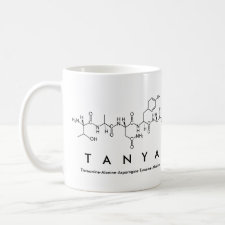
Authors: Sergeyeva TA, Piletska OV, Brovko OO, Goncharova LA, Piletsky SA, El'ska GV
Article Title: Aflatoxin-selective molecularly-imprinted polymer membranes based on acrylate-polyurethane semi-interpenetrating polymer networks.
Publication date: 2007
Journal: Ukrainskii Biokhimicheskii Zhurnal
Volume: 79
Issue: (5)
Page numbers: 109-115.
Alternative URL: http://ubj.biochemistry.org.ua/index.php?content=archive&article=325
Abstract: Synthetic analogs of biological receptors able to group-selective recognition of anatoxins were obtained using the combination of the technique of molecular imprinting with the method of computer modeling. The synthetic receptors were obtained in a form of thin and porous membranes based on semi-interpenetrating polymer networks. The selection of functional monomers able to noncovalent interactions with anatoxins B1, B2, and G2 was based on the data of computer modeling. Allylamine, diethylaminoethylmethacrylate, and N,N'-methylenebisacrylamide, providing high binding energies with anatoxins B1, B2, and G2 were selected as functional monomers for the formation of aflatoxin B1-imprinted polymer membranes. It was shown that aflatoxin-B1-imprinted polymeric membranes synthesized using N,N'-methylenebisacrylamide as a functional monomer were characterized with good physico-mechanical properties as well as good adsorbtion capability to-wards aflatoxin B1. Neglidgible levels of aflatoxin B1 adsorbtion on the surface of blank membranes were observed. High adsorbtion capability of the MIP membranes towards mycotoxins affiliated to the group of aflatoxins was demonstrated, while negligible adsorbtion of ochratoxin A was observed. Therefore, synthetic analogs of biological receptors able to group-selective recognition of aflatoxins in the range 1-1000 ppb were developed
Template and target information: aflatoxin B1, anatoxin B1, anatoxin B2, anatoxin G2
Author keywords: Aflatoxin B1, molecular imprinting, molecularly-imprinted polymer, Solid-phase extraction



Join the Society for Molecular Imprinting

New items RSS feed
Sign-up for e-mail updates:
Choose between receiving an occasional newsletter or more frequent e-mail alerts.
Click here to go to the sign-up page.
Is your name elemental or peptidic? Enter your name and find out by clicking either of the buttons below!
Other products you may like:
 MIPdatabase
MIPdatabase









